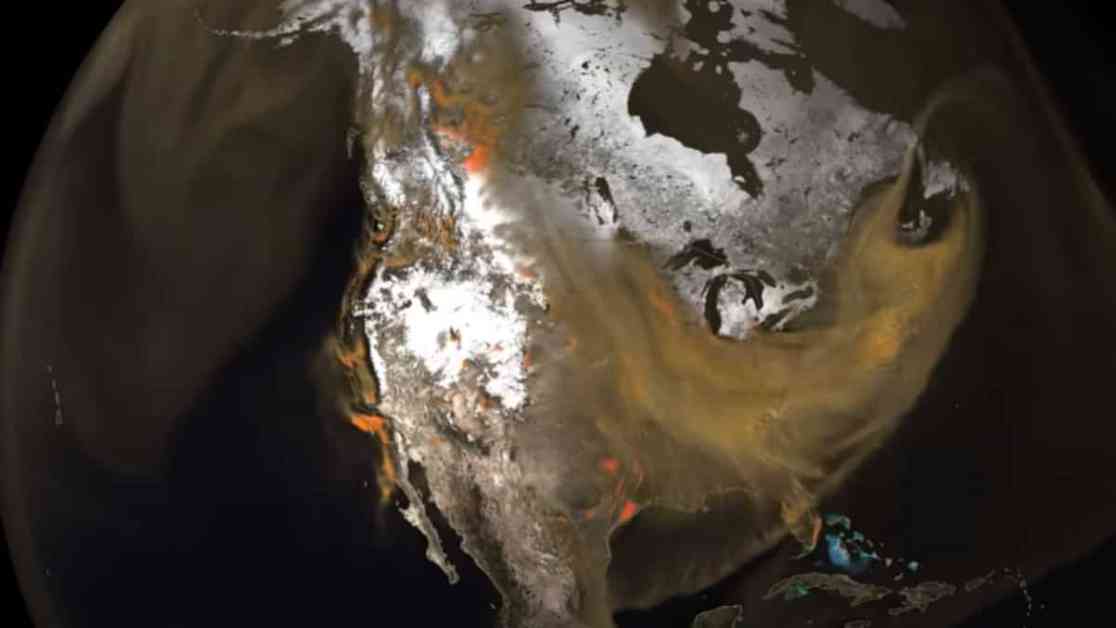NASA recently unveiled a fascinating video showcasing the movement of carbon dioxide in the sky above South Asia, China, and the United States. The Earth has been experiencing a rise in temperature due to greenhouse gas emissions, particularly carbon dioxide, which is posing challenges for human survival in various parts of the world. July witnessed the Earth’s consecutive hottest days on record.
The video released by NASA’s Scientific Visualization Studio provides a detailed view of how wind and air currents are dispersing carbon dioxide emissions across the Earth’s atmosphere from January to March 2020. The video zooms in on individual sources of carbon dioxide, such as power plants and forest fires.
Lesley Ott, a climate scientist at NASA’s Goddard Space Flight Center, emphasized the importance of understanding the origins of carbon emissions and their impact on the planet. The video highlights the interconnected nature of different weather patterns and how carbon dioxide is circulated globally.
While the video showcases carbon dioxide emissions from various sources, it reveals some interesting global patterns. Most emissions originate from power plants, transportation, and industries in South Asia, China, and the United States. In contrast, Africa and South America see significant emissions from burning activities like land clearing, agricultural burning, and forest fires.
The pulsating image in the video is a result of various factors. Forest fires intensify during the day and subside at night, while plants and trees engage in photosynthesis during the day, releasing oxygen and absorbing carbon dioxide. The Earth’s oceans and land masses act as carbon sinks, contributing to the complex carbon cycle.
The visualizations in the video were generated using GEOS (Goddard Earth Observing System), an integrated system that models the Earth’s atmosphere, ocean, and land systems. This technology allows scientists to study and understand the intricate processes that govern carbon dioxide movement in the atmosphere.
NASA’s groundbreaking video provides valuable insights into the dynamics of carbon dioxide emissions and their impact on the Earth’s climate. By visualizing these processes, researchers and policymakers can better address the challenges posed by greenhouse gas emissions and work towards sustainable solutions for a healthier planet.












